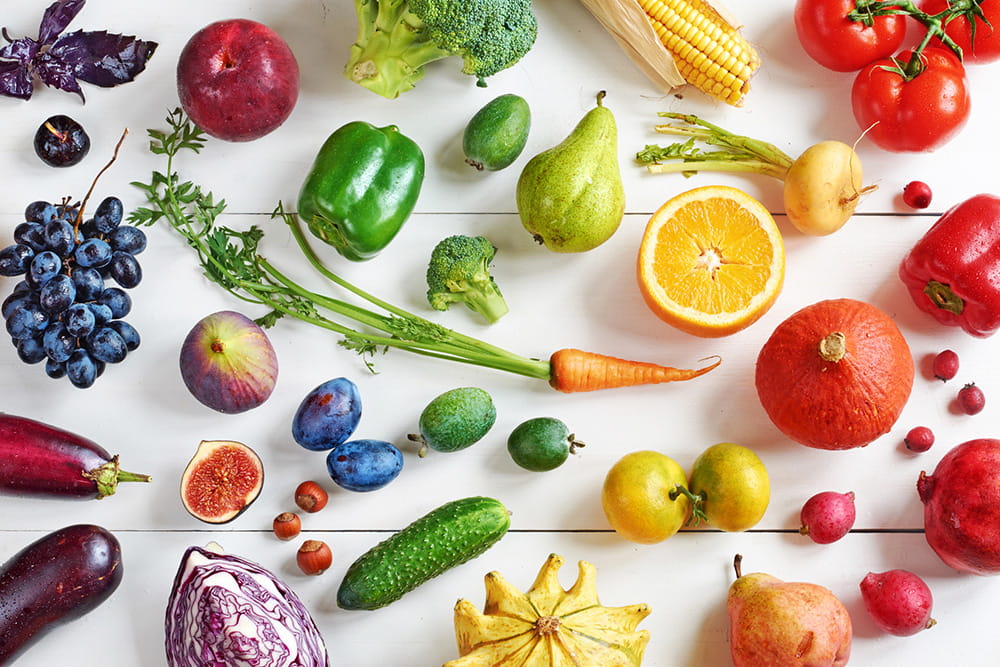How to Eat More Vegetables Without Eating Salad

It's good to add more fruits and vegetables to your diet for a variety of health benefits, including to lose weight. Whether you cook at home or eat out, try these easy ways to sneak more colorful, nutritious and delicious vegetables and fruits into your snacks and meals (even breakfast).
Which fruits and vegetables are best?
That's easy: They're all good! If you eat many different types of fruits and veggies, you're sure to get all the different types of nutrients you need. The American Heart Association recommends filling at least half your plate with fruits and veggies in order to make it to the recommended 4 ½ cups of each per day. The good news is that all produce counts, which means canned, fresh and frozen varieties can help you reach your goal.
When buying canned, dried or frozen vegetables and fruit, be sure to compare food labels and choose the products with the lowest amount of sodium and added sugars.
Breakfast
- Eat melon, grapefruit or other fruit.
- Add bananas, raisins or berries to your cereal.
- Drink a small (6-ounce) glass of juice. Be sure it's 100% fruit or vegetable juice without excess sodium or sugar – not "fruit drink," "cocktail" or "punch."
- Add chopped up vegetables to your eggs or potatoes. Try onions, celery, green or red bell peppers, or spinach.
Lunch
- Have a fruit or vegetable salad with lunch.
- Put vegetables on your sandwich, such as cucumber, sprouts, tomato, lettuce or avocado.
- Eat a bowl of vegetable soup. (Compare food labels and choose the product with the lowest amount of sodium you can find in your store, or make soup from scratch.)
- Have a piece of fruit or raw veggie sticks instead of chips.
Snacks
- Keep raw veggie sticks handy, such as green or red bell peppers, green beans, celery or carrots.
- Carry dried fruit, such as raisins, dates or dried apricots, in your purse or pocket.
- Have any type of fresh fruit: grapes, apple, banana, orange, kiwi, etc.
- On hot days, munch on a bowl of frozen fruits or vegetables, such as grapes, peas or bananas.
Dinner
- Have a fruit or vegetable salad with dinner.
- Add a side of steamed or microwaved vegetables – frozen veggies are fine!
- When you use the oven to cook your meal, put in a whole potato, sweet potato or yam at the same time.
- Add chopped vegetables like onions, garlic and celery when cooking soup, stew, beans, rice, spaghetti sauce and other sauces.
- When making rice, add some frozen peas for the last three minutes of cooking.
Take the Next Step
If you're already eating plenty of fruits and veggies every day, you may be ready for the next step: include more color. All fruits and vegetables contain vitamins, minerals and other nutrients that may help prevent heart disease, cancer and other illnesses. Some of these nutrients are fiber, potassium, folate, and vitamin A and C. The best way to get all the various nutrients is to eat fruits and vegetables of many different colors. The five main color groups and examples in each group are listed on the Eat More Color infographic. Eat from as many color groups as you can each day.
Written by American Heart Association editorial staff and reviewed by science and medicine advisers. See our editorial policies and staff.
How to Eat More Vegetables Without Eating Salad
Source: https://www.heart.org/en/healthy-living/healthy-eating/add-color/how-to-eat-more-fruits-and-vegetables
0 Response to "How to Eat More Vegetables Without Eating Salad"
Post a Comment